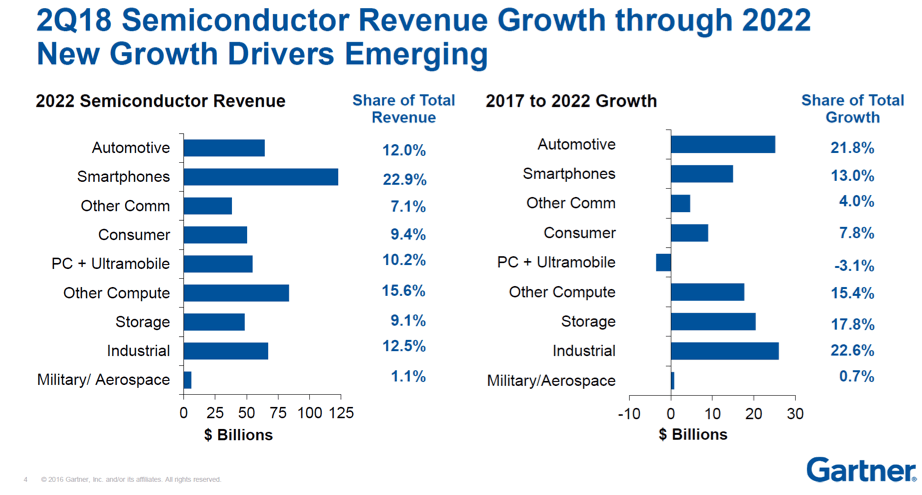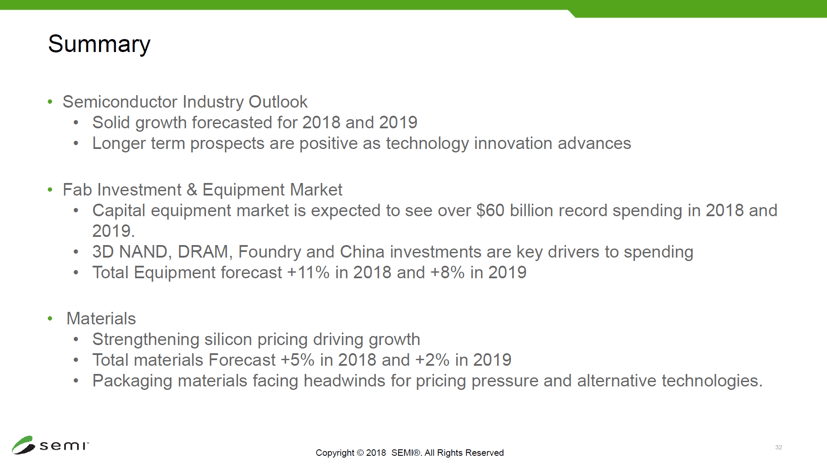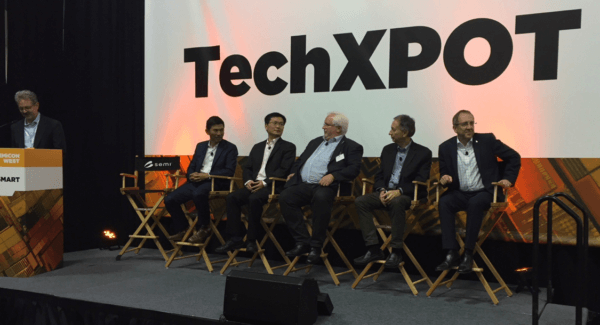 SEMICON West (San Francisco, July 10 to 12) confirmed that our industry’s rapid growth will continue. Machine learning (ML) and artificial intelligence (AI) will be the core technologies for a wide range of new applications.
SEMICON West (San Francisco, July 10 to 12) confirmed that our industry’s rapid growth will continue. Machine learning (ML) and artificial intelligence (AI) will be the core technologies for a wide range of new applications.
Applying AI to win in new and diverse markets – like autonomous cars, medical equipment, military systems, factory automation and a broad range of consumer products – will require, above all, highly reliable combinations of application-specific software and hardware. While fleets of autonomous vehicles cruise our streets to mature the software part for cars, the semiconductor industry is responsible for developing and manufacturing highly reliable ICs and modules, combining complex compute functions, memories, mixed-signal circuits, sensors, MEMS and PMICs, to make AI-powered nodes perform their application-specific roles safely, securely and of course at low cost and using minimal power.
Session takeaways
On Monday afternoon I listened to a series of in-depth pre-conference presentations about key market trends and opportunities. Gartner’s Bob Johnson projected that Semiconductors will reach $ 500 B revenues in 2019 and gave a great market segments overview (Figure 1). It shows that the current killer-app, smartphones, will be overtaken by several faster growing applications.

Clark Tseng, SEMI’s Director Industry Research and Statistics, showed how rapidly revenues grew in the last 30 years. (Figure 2)

Tseng also summarized key industry trends (Figure 3).

Several other session speakers confirmed the growth opportunities autonomous driving, 5G, Industry 4.0 and other application areas will bring. However, they also cautioned that rising interest rates, tariffs, geopolitical tensions and unforeseen global developments may dampen the current optimism.
Keynotes
On Tuesday morning Dave Anderson, President SEMI America’s welcomed the many attendees and emphasized that, with winning the Electronic System Design Alliance as Strategic Association Partner, they now span the entire supply chain, from system and IC planning and design to manufacturing and test.
Melissa Schilling, Professor of Management at NYU’s Stern School of Business, was the first keynote speaker. In a brief presentation, she outlined her study of “Traits, Foibles and Genius of breakthrough innovators”. Her book Quirky describes Curie, Edison, Einstein, Franklin, Jobs, Dean Kamen, Musk as well as Nikola Tesla and what she found. These high performers shared the following traits: A sense of separateness, self-efficacy, Idealistic Goals to motivate them intrinsically and, equally if not more important, they had at the right time the necessary resources to succeed.
John Kelly III, IBM ’s senior VP, Cognitive Solutions & Research looked back at major technology drivers, then announced that IBM is not only proud of Watson for winning at Jeopardy, they’ll soon introduce “Watson Debater” that can reason and discuss with humans, utilizing AI and a large database of “learned” facts. Kelly also mentioned Summit, their supercomputer, and compared its 13 MW of power with the consumption of a human brain …. 20 Watts. He predicted that Qubits (a.k.a. Quantum Bits) will impact the progress of computing significantly in the few next decades.
Gary Dickerson, CEO Applied Materials, highlighted the importance of AI as a growth driver and, referring to Summit’s 13 MW of power, stated that we need to find ways to reduce power dissipation of electronic systems by 1000 X. Further progress in equipment capabilities and material characteristics, as well as architectures, will be needed to get there.
Tuesday’s keynotes started with Mark Papermaster, AMD’s CTO and senior VP. He predicted that more compute power will be needed to give buyers of electronic systems a better user experience. ML, AI, libraries of application-specific algorithms and an open ecosystem will help. Papermaster outlined EPYC 2 and VEGA, multi-die ICs, as examples of AMD’s commitment to providing higher performance per Watt. He mentioned that today 70% of the data is generated by the edge nodes. Large silicon content enables them to pre-process and transmit data to the cloud. Papermaster closed with a very encouraging comment: After 35 years in our industry I can tell you that we are now facing the biggest opportunity in our careers!”
Wolfgang Juchmann, VP Business Development at AutonomouStuff, made an impressive entry, when he rolled, totally hands-free, on stage in a small car. He explained that his company developed a fleet of R&D platforms, like the one on stage, and provides products and services to autonomous vehicle developers.
Amir Husain, Founder, and CEO of SparkCognition and prolific author (e.g. The Sentient Machine) explained how and where AI can provide value. He referred to Mark Andreessen’s comment “Software is eating the world” and stated, “and AI is eating software”. He concluded by emphasizing the importance of security for all these systems.
Most of the impressive Semicon presentations I saw talked about system-level innovations and how they will enhance our lives. I also enjoyed an afternoon session that focused on how advancements on the component level are enabling lower cost, higher performance and more reliable systems. Its title was: “Heterogeneous Integration for AI at the Edge”.

Bill Chen, ASE Fellow and Senior Technical Advisor, introduced the speakers and panelists: Hubert Karl Lakner from Fraunhofer’s IPMS (Institute for Photonic Microsystems), Robert Lo from ITRI (Industrial Technology Research Institute), Ingu Yin Chang from ASE Group, David Butler from SPTS/Orbotech, Ken Hansen from SRC, Baghat Sammakia from Binghamton Univ., Samuel Naffziger from AMD and Bob Sankman from Intel.
In their initial presentations and in the following panel discussion, moderated by Ed Sperling, these well-known experts made it very clear that our new killer-apps will need fairly complex edge-nodes that combine heterogeneous functions with significant compute power to really produce killer-revenues and profits. Considering how many billions of edge-nodes we’ll deploy in the next few years, tells me that the time for multi-die ICs (a.k.a. system-in-package) has finally come.
I’m looking forward to next year’s Semicon West. It will demonstrate the synergy between Design and Manufacturing. Thanks….. ~ Herb.
PS: Please join me for the following conferences:
EDPS – September 13-14, 2018
IWLPC – October 23-25, 2018
MEPTEC – December 5, 2018

















